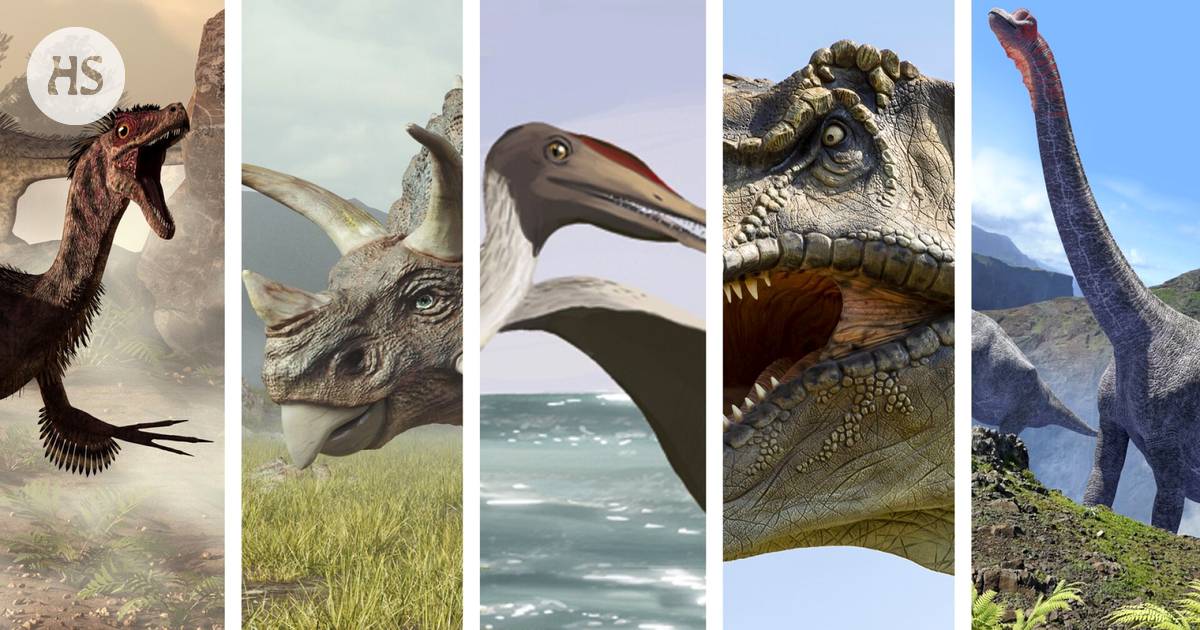200 they have been wondered about in science for years. And also in museums, schools, children's books and movies, year after year.
Children marvel at them in fear when they are so terribly big. They soon grow to like them – when they hear they are no longer a danger.
It's about is about dinosaurs.
20 February 1824 is the one holiday of the dinosaurs. Then, 200 years ago, a species of dinosaur was scientifically named for the first time. It got the name megalosaurus, meaning “big lizard”.
At least British palaeontologists, researchers of fossils, celebrate the day. The British started the study of dinosaurs.
Fads may not have been foreseen at first. But now, six Jurassic Park movies later (1993–2022), their popularity speaks for the fact that dinosaurs have not been dug up. There is always something new to wonder about for new knees.
In science, a new species of dinosaur is named on average every two weeks. New ones have been found on all continents.
Still, perhaps 70 percent of the species have yet to be found, the paleontologist estimates Riley Black In Popular Science.
This is what the megalosaurus was believed to be in 1862.
All thus began in February 1824. British clergyman and geologist William Buckland described and presented Megalosaurus to the Geological Society of London.
Bucklan had been collecting large fossilized bones for a long time. He found them in the Stonesfields area of Britain. The region is more than a hundred kilometers northwest of London.
Already in 1818, Buckland presented his bones to the famous French anatomist For Georges Cuvier. The men began to realize that the bones belonged to a gigantic animal.
Of course, large bones had already been collected before that. English natural historian Bobert Plot described large, petrified bones as early as 1676 in his book on the natural history of Oxfordshire.
Of course, large fossils had been collected from different parts of the world. In Africa, different tribes collected these strangely large bones as early as the 12th and 18th centuries.
It was long before the words “paleontology” and “dinosaur” were invented, remind African paleontologists Scientific American -in leaf.
Evidence of bones collected in Africa has been found in rock caves in Lesotho, for example. The original home of humans is in Africa, so there has been time to wonder about them for a long time.
As late as the 18th century, most believed that the bones came from overgrown lizards, giant birds, elephants, or even from the giants.
Current understanding of what a megalosaurus looked like. It lived more than 160 million years ago.
“Megalosaurus shaped our understanding of the history of life on Earth,” says Dr Emma Nicholls From the Oxford Museum of Natural History. He describes to the BBCwhat the naming of the megalosaurus meant.
“It became a sensation. For the first time, a large, extinct reptile was described,” says the paleontologist Paul Barrett From the Natural History Museum, London. He tells about dinosaurs science magazine In the theme issue of Nature.
Megalosaurus did not become a dinosaur, i.e. part of the top order of reptiles, until the beginning of the 1840s. The name dinosaur of the upper order, or “terrifyingly large lizard”, was developed by an English paleontologist and anatomist Sir Richard Owen.
Dinosaurs the names have since become quite a jumble.
Megalosaurus got its name from its size. Names have since been given based on other features of the dinosaurs. The names describe, for example, the fossil's wings or teeth.
Names are also given according to the researcher and the place of discovery. Researchers and discoverers have had a pretty free hand. Maybe even too free.
Now, some supporters want dinosaurs to be better classified. The new names would be more comprehensive. They could also tell about how and where “terrible fossils” are found.
This is already done in many other scientific fields. In chemistry, the naming of new compounds is governed by fairly strict rules.
Zoologists, on the other hand, are relatively free to name the species they find. The researcher or group that publishes the discovery first gets to choose the name.
Zoological nomenclature is overseen internationally by a committee, which the abbreviation is ICZN. It has only a few guidelines for naming.
One requirement is that the name is new and unique. The name must relate to one and the same individual.
This is perhaps what Datai yingliangis looked like. Its fossils have been found in eastern China. The drawing was published at the beginning of March.
Dinosaurs the naming has of course changed in 200 years.
Naming a species after a person or people has become more common. More than half of them have been given in the last 20 years, says the paleobiologist Emma Dunne from Friedrich-Alexander University in Germany.
Dunne and his team study the names that paleontologists have given to their discoveries. On average, new names appear almost every week.
The team studied all the names that had been given to the dinosaur fossils found, dating from about 252 to 66 million years ago. About 1,500 names were found.
According to Dunna's group, there are problems in about three percent of all names. So there are only dozens of them.
They found colonialism, racism and sexist expressions in the names.
In the future names should be thought more carefully, the researchers suggest.
It might be better to describe the new dinosaur by its appearance only. Here a model can be provided by the American Ornithological Society.
It decided in November 2023 that the club change all the English names of the birdswhich are given according to the person.
#Dinosaurs #Megalosaurus #started #dino #craze #years #thousand #species #named








